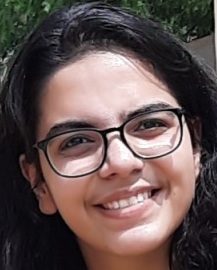
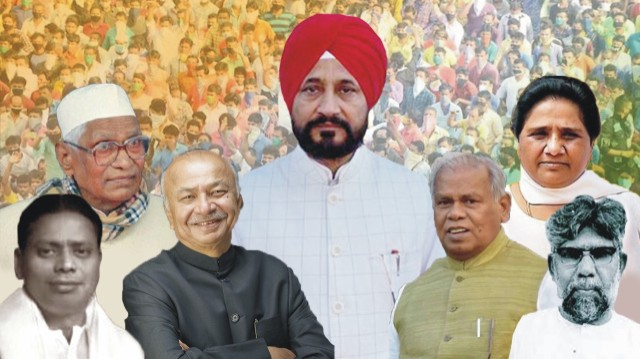
Charanjit Singh Channi has become the first Dalit (Scheduled Caste) to take oath as the Chief Minister of Punjab after Independence.
While the BJP has announced that its chief-ministerial candidate would be a Scheduled Caste and Shiromani Akali Dal (SAD) declared that the Deputy Chief Minister’s post would go to a Dalit, the Congress has gone ahead and done it just before the state Assembly elections, due early next year.
This decision of inducting a Dalit CM by Congress has come when BJP has been trying to portray the Kisan Andolan (farmers’ movement) as an exclusive Jat Sikh movement. Is this a counter reply to attempts of social engineering and mobilization of OBCs and SCs by BJP in the state?
Why did Congress wait for so long to induct a Dalit chief minister after Sushil Kumar Shinde in Maharashtra after 2004?
Many are inferring this to be a politics of symbolism by Congress. The Congress’ history of first inducting Dalit Chief Ministers and then replacing them is a well-known fact.
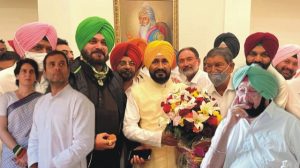 Whether Channi will continue as Chief Minister in case Congress returns to power in the 2022 Punjab Assembly elections is a matter of speculation. But this decision has certainly created problems for the main opposition parties – Aam Adami Party (AAP) and SAD.
Whether Channi will continue as Chief Minister in case Congress returns to power in the 2022 Punjab Assembly elections is a matter of speculation. But this decision has certainly created problems for the main opposition parties – Aam Adami Party (AAP) and SAD.
And the tremors of this decision will also be felt within party politics of congress neighboring states such as Haryana where there is a constant rift between Jaat and Dalit politicians. Despite BJP’s promise of Dalit chief ministerial candidate, it is also a cruel fact that where BJP had remained in power and is in power, there hasn’t been a single Dalit chief minister.
It is for the first time in Punjab and, maybe, also in India that both Chief Minister Charanjit Singh Channi and Leader of Opposition Harpal Singh Cheema belong to the Dalit community.
Historically, it is mostly Jat Sikhs who have been the chief minister of the state. Even before Independence, in the Punjab province, power rested in the hands of the Jat peasantry. Sikandar Hayat Khan and Malik Khizar Hayat Tiwana were the two Mulsim Jats who were the Prime Ministers of the province before Independence.
After Independence, joint Punjab has had only three non-Jat Hindu Chief Ministers. They are Bhim Sen Sachar, Gopi Chand Bhargava, and Ram Kishan.
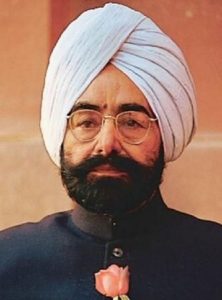
After the state reorganization in 1966, Giani Zail Singh, a Ramgarhia, has been the only non-Jat Sikh Chief Minister. Moreover, it was the only time when the state had a Chief Minister belonging to a Backward Class as he was a carpenter by caste. It is after 1977, almost four decades after Giani Zail Singh, that the state has got a Dalit Sikh Chief Minister, Charanjit Singh Channi.
The Congress decision is also being seen as a masterstroke to thwart the BJP’s attempt to draw fault-lines between Jat Sikhs and non-Jat Sikhs in Punjab. By giving various posts to non-Jat Sikhs, the BJP has been attempting to widen the gap between Jat Sikhs and non-Jat Sikhs.
To effect a new pattern of social engineering in Punjab, the BJP appointed Iqbal Singh Lalpura, a non-Jat Sikh, as Chairman of the National Minority Commission.
Then, Vijay Sampla, former Union Minister, was appointed Chairman of the National Commission for Scheduled Caste in February 2021. Sampla is the among well-known Dalit faces in Punjab. Inderjeet Singh, grandson of former President Giani Zail Singh, was inducted into the BJP in September 2021.
The BJP gave a ticket to Hardeep Singh Puri, a Sikh Khatri, from the Amritsar Lok Sabha seat, but he lost to INC candidate Gurjeet Singh Aujla. This was seen as an attempt to attract Sikhs living in urban areas, a huge proportion of which comprise Sikh Khatris.
All these attempts are seen as a move to isolate the Jat Sikhs in Punjab politics.
Dalits and OBCs together constitute 63.2 percent of the total population in Punjab. It is crystal clear how the two communities are important electorally.
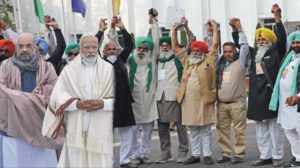 And because of the damage done by the Kisan Andolan, the BJP is trying to portray the farmers’ movement as solely a Jat Sikh movement even as it is simultaneously attracting Dalits and OBCs towards itself.
And because of the damage done by the Kisan Andolan, the BJP is trying to portray the farmers’ movement as solely a Jat Sikh movement even as it is simultaneously attracting Dalits and OBCs towards itself.
But whether these attempts of social engineering by the BJP will bear fruit is doubtful due to three reasons.
Firstly, the socio-economic status of Dalits and OBCs in Punjab is better than the Dalits in other states. Also, they live dignified life due to the socio-religious influences of the teachings of Guru Nanak.
Unlike other states, a division based on caste lines is not very strong in Punjab. Jat Sikhs and lower castes generally share cordial relations. A huge chunk of the population belonging to the Scheduled Castes and OBC communities has also settled overseas, which makes their economic condition sound.
Secondly, the voting behavior in Punjab is not on caste and religious lines. A good chunk of the Sikh votes has gone to Congress. If the voting would have been purely based on religious lines, Sikh votes would not have been divided between Congress and SAD.
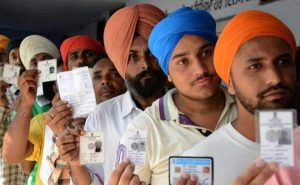
If voting happened on caste lines, then the BSP would have been one of the most powerful parties, considering the huge proportion of Dalits in the state.
The highest share of votes that the BSP got in Punjab was 13.7% during the 1997 Assembly elections. Since then, a decline in the vote percentage of the party can be seen. In 2002, the BSP got 6.6% of the votes and in 2007, the vote percentage came down to 4.91%. In 2012, the party’s vote share was 4.29% and in the 2017 Assembly elections, it fell further to 1.59%.
Interestingly, Kanshi Ram, the founder of the BSP hailed from Punjab. Though the state has a 32% Dalit population, his party couldn’t do well here.
This, to a large extent, proves the point that in Punjab, the voting trend is not based on caste lines.
Thirdly, it is also very difficult for the Dalits of Punjab to digest the BJPs claim of Dalit uplift due to the huge disproportion between the party’s actions and words. All the neighboring states of Punjab – Haryana, Himachal Pradesh, Uttarakhand, and Uttar Pradesh – have upper-caste chief ministers.
Jai Ram Thakur, Chief Minister of Himachal Pradesh is a Rajput, Manohar Lal Khattar, Chief Minister of Haryana, is a Punjabi Khatri, and Yogi Adityanath, Chief Minister of Uttar Pradesh, is again a Rajput. The percentage of the Dalit population is 20, 25, and 20.75 in Haryana, Himachal, and Uttar Pradesh, respectively, according to the Census of 2011.
Even in other states, the BJP has abstained from inducting a Dalit on the post of the chief minister. Uttarakhand, where the BJP is in power and where Dalits constitute around 19% of the population, has a Rajput Chief Minister.
The Chief Minister of Uttarakhand, Pushkar Singh Dhami, also belongs to a Rajput family. Even the two Chief Ministers who preceded him – Tirath Singh Rawat and Trivendra Singh Rawat – were Rajputs. In Jharkhand, which is a predominantly tribal state, the BJP experimented with inducting Raghubar Das, a non-tribal, as Chief Minister.
He was appointed as Chief Minister in 2014 and remained in that position till the next Assembly elections in 2019. The other states where the BJP is not in power have also not seen Dalit Chief Ministers.
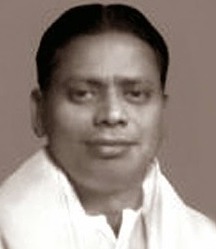
All this indicates problematic trends in Indian politics as a whole. West Bengal, where Scheduled Castes consist of 23.5% of the total population, has never seen a chief minister hailing from the Scheduled Caste communities. Bengal politics has mostly been dominated by Bengali Hindu upper castes.
Andhra Pradesh’s SC population share is 16% but Damodaram Sanjivayya has been the only SC Chief Minister the state has had till now.
In Bihar, in 2014, Jitan Ram Manjhi was sworn in as chief minister but after serving for nine months he was succeeded by Nitish Kumar. Interestingly, he was also the one who preceded him. Odisha and Rajasthan, where the Scheduled Caste population is around 17%, also depict the same trend.
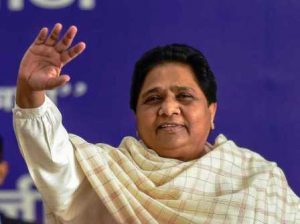
Mayawati is the only leader to come to power in UP after earning a mandate. She is the product of the Dalit movement. And, fortunately, she is the only Scheduled Caste Chief Minister to complete the tenure of five years from 2007 to 2012. Earlier, she had come to power three times in 1995, 1997 and 2002, but couldn’t complete even one year in office.
The decision of inducting a Dalit Chief Minister in Punjab by the Congress compels us to take a glimpse of the history of Dalit Chief Ministers in the Congress regimes.
Damodaram Sanjiviyya became the Chief Minister of Andhra Pradesh in 1960 and was the first Scheduled Caste to become the chief minister of any Indian state. But he served only till 1962 and was succeeded by Neelam Sanjiva Reddy.
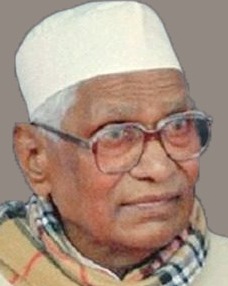
Then in June 1971, Bhola Paswan Shastri was sworn in as Chief Minister of Bihar, but in January 1972, President’s rule was proclaimed in the state.
Then, in June 1980, Jagannath Pahadia was sworn in as ninth Chief Minister of Rajasthan, but within a year, he was replaced by Shiv Charan Mathur.
In January 2003, Sushil Kumar Shinde was appointed Chief Minister of Maharashtra, but in November 2004, he was replaced by Vilasrao Deshmukh.
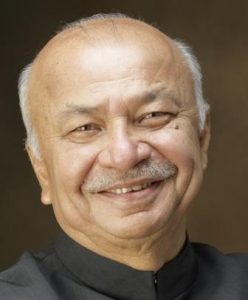
He was the fourth Chief Minister from the Indian National Congress who could not remain in position for more than two years. Thus, it can be ascertained that Congress has treated chief ministers from Scheduled Castes community merely as caretaker chief ministers.
Whether Charanjit Channi will be continued as the chief minister of Punjab if the Congress again comes to power in the elections next year or discontinued like the other Congress Dalit chief ministers remain to be seen.
Dalit groups in Punjab see his appointment as vote bank politics because Dalits constitute 31.9% of the population (according to the 2011 Census, their population might have risen to 38% in 2021).
The community to which Channi belongs, that is the Ravidassia community, constitutes almost 60% of the total Dalit population in Punjab.
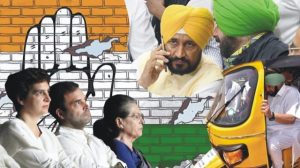
If Congress comes to power again and discontinues Channi as Chief Minister, it will prove the apprehensions of the Dalits that his appointment is just vote bank politics.
Does the Congress move of making Channi the Chief Minister of Punjab indicate a social change or is it just an attempt of social engineering? The answer to this question will only be known after the results of the Punjab Assembly Elections in March 2022.
If the Congress comes to power and Charanjit Singh Channi is retained as Chief Minister, then it will send the message of a positive socio-political change and if not, his name will be added to the examples of Scheduled Caste chief ministers who had allegiance to the Congress but couldn’t complete a single full term. ![]()
Also Read:
Is the Congress going to seed?
Punjab – How a deadly cocktail of Agri-Water-Energy nexus going to destroy it?
Had UP voted for Yogi Adityanath?
Decoding the Saffron Color of Hindutva
North Pole and the ideological conflict of RSS & Hindutva
Indigo Revolt of 1859 and Farmer protests in 2020
Aligarh Is Etched In Our Memory
Jallianwala Bagh Renovation – A Memoricide of Punjab
A Tale of Two CMs – Amarinder vs Arvind

Disclaimer : PunjabTodayTV.com and other platforms of the Punjab Today group strive to include views and opinions from across the entire spectrum, but by no means do we agree with everything we publish. Our efforts and editorial choices consistently underscore our authors’ right to the freedom of speech. However, it should be clear to all readers that individual authors are responsible for the information, ideas or opinions in their articles, and very often, these do not reflect the views of PunjabTodayTV.com or other platforms of the group. Punjab Today does not assume any responsibility or liability for the views of authors whose work appears here.
Punjab Today believes in serious, engaging, narrative journalism at a time when mainstream media houses seem to have given up on long-form writing and news television has blurred or altogether erased the lines between news and slapstick entertainment. We at Punjab Today believe that readers such as yourself appreciate cerebral journalism, and would like you to hold us against the best international industry standards. Brickbats are welcome even more than bouquets, though an occasional pat on the back is always encouraging. Good journalism can be a lifeline in these uncertain times worldwide. You can support us in myriad ways. To begin with, by spreading word about us and forwarding this reportage. Stay engaged.
— Team PT


Copyright © Punjab Today TV : All right Reserve 2016 - 2024 |